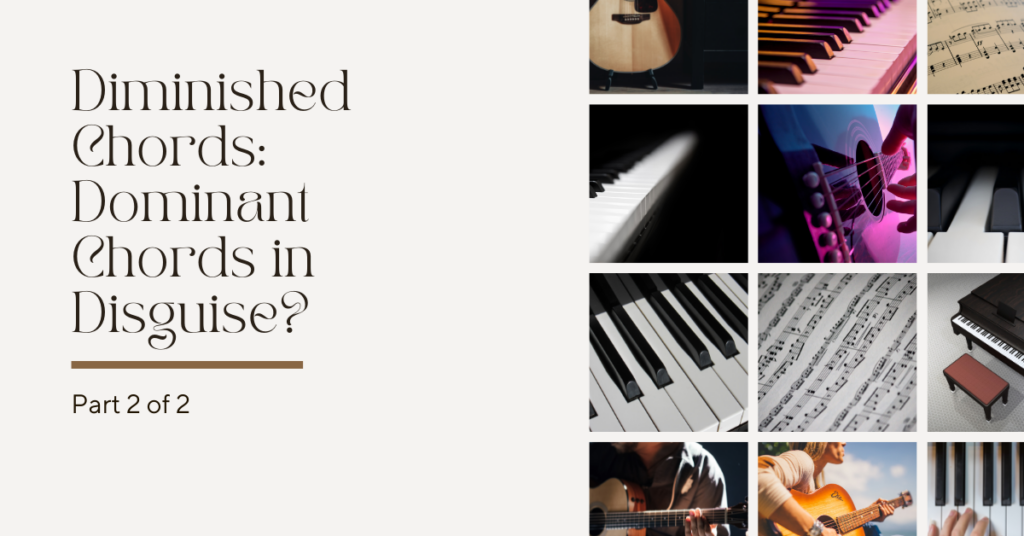When creating arrangements for jazz standards, students usually ask me “How do I arrange measures with only one chord in them?”
Typically jazz standards have 2 chords per measure which happen on the first and third beats. This is not a rule, just an observation. Sometimes you might have more chords per measure, but two chords seems to be the average.
With two chords per measure, you get enough motion in the left hand so that it doesn’t sound like ‘dead air’ since you get a chord sound basically every other beat (beat 1 and 3). However, when you only have one chord per measure, the arrangement can come to a temporary standstill with a rhythmic vacuum on beats 2, 3 and 4.
Look at it this way, two chords per measure gives you a sound on beats one and three. Your ear gets used to hearing a chord on beat one and three and when there is no chord on the 3rd beat, it sounds empty.
So, what’s the solution? Simple, play a chord sound on beat one AND beat three.
The question now becomes, “If there is only one chord per measure, what chord do I play on the third beat?”
At first you might think: “I should do some kind of reharmonization, right?”
Well, you could, but it is not necessarily the best choice. An easier choice is to play the same chord again.
But before we just play the SAME chord twice, we’re going to change the chord voicing so it doesn’t sound so redundant.
Chord Voicings
So what is a chord voicing? If you don’t already know, chords are made up of two or more notes. Typically, in jazz, we are playing four-note chords.
A chord voicing is how we arrange the notes of the chord. Let’s use a C7 chord as an example. A typical ‘block-chord’ version of a C7 chord is C-E-G-Bb. This is a root-position chord voicing. If we move the notes around, we can create many different voicings.
Let’s say we decided to play E and Bb in ur left hand and C and G in our right hand. We’ve now created a two-hand chord voicing.
Different chord voicings are simply different ways we can arrange the notes of the chord.
So what do different chord voicings have to do with arranging?
Let’s talk clothes.
Why do we wear different clothes each day? It’s not necessarily because they are dirty right? One reason is that we like to be a little different; not so predictable. Same goes for arranging jass standards.
As jazz musicians, we don’t like playing the same thing every time. In fact, arrangements are often changed performance-to-performance. I don’t think I every play a song the same way twice.
In the example below, you can see a simple example of how to create motion in your left hand without needing to use a new chord and without playing the same voicing twice.
You’ll notice on the G-7 chord, we play a Root-7 chord shell on beat one, then play only the 7th on beat three. Could I have repeated the chord shell and played the same G-F on both beats one and three? Sure, but that would get to sound predictable.
Pro-tip: Rather than creating a complicated “new” voicing for beat three, play the same voicing that you played on beat one, minus the bottom note.
Now, take a look at the F6 in the first measure. You’ll notice here I didn’t play any chord on beat three. Why you ask?
Look at the right hand. What do you notice on beat 3? See that string of eighth notes?
Since the right hand is so ‘busy’ with those eighth notes, I didn’t need to add anything to the left hand.
The takeaway:
- Two chords per measure creates a nice balance between moving the song along and not sounding too busy
- If you only have one chord written in a measure, repeat the chord with a different voicing
- A good ‘alternate voicing’ for beat three is to use the SAME notes you played on beat one…without the bottom note.
Do you want the PDF file of the entire 8-measures from the Nearness of You? Fill out the form below to get an immediate download!
Grab The Sheet Music for Free

The Nearness of You is a Live-to-Library lesson. Learn more about our Live-to-Library training sessions.


